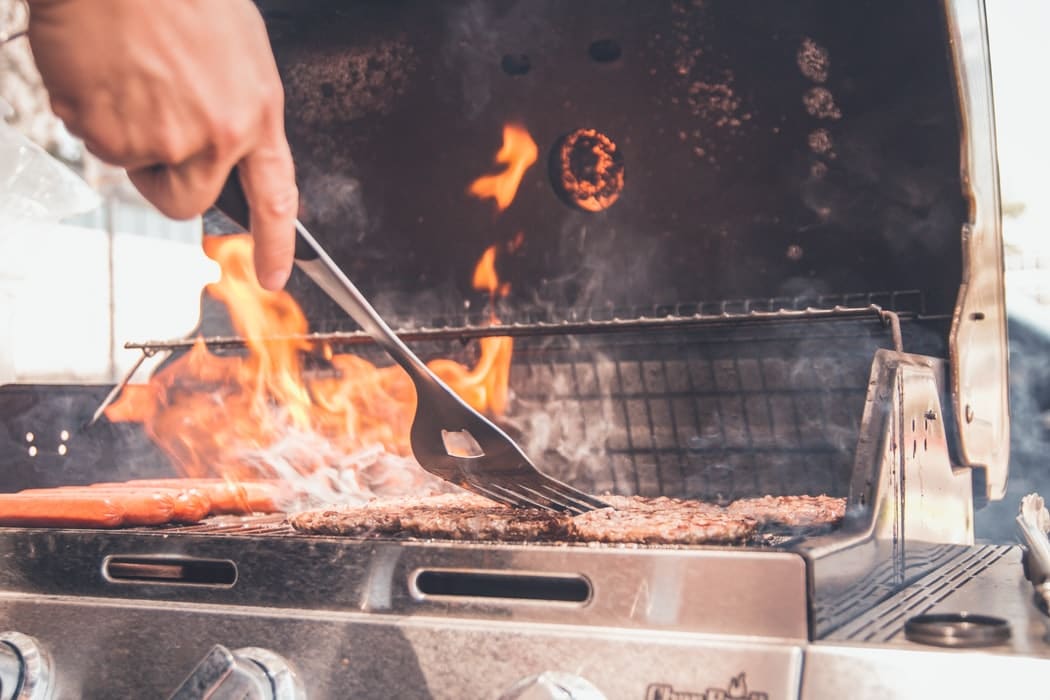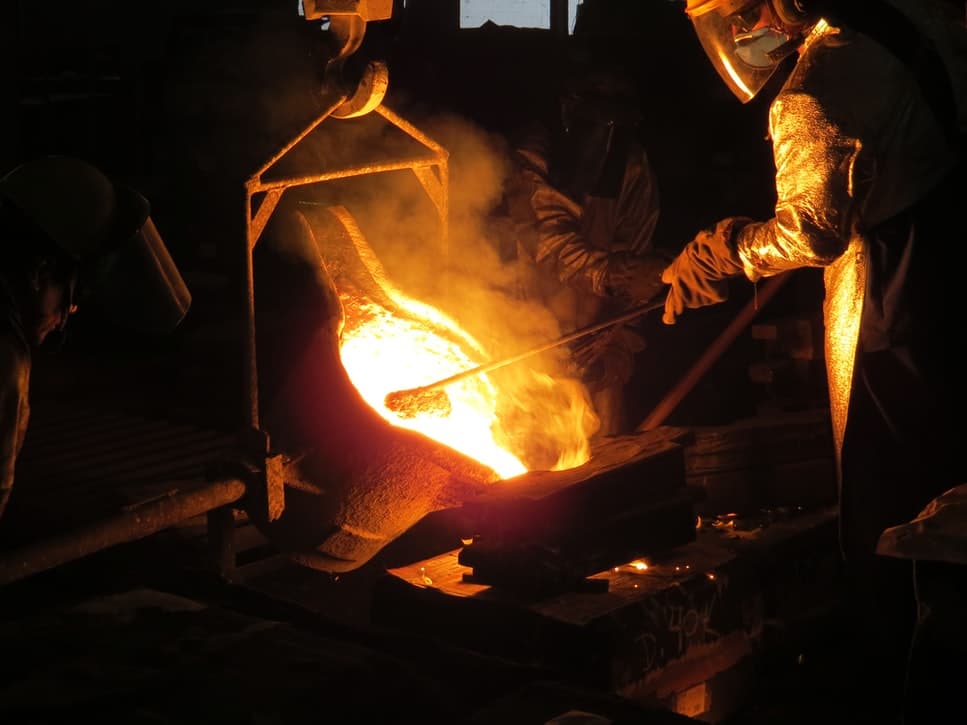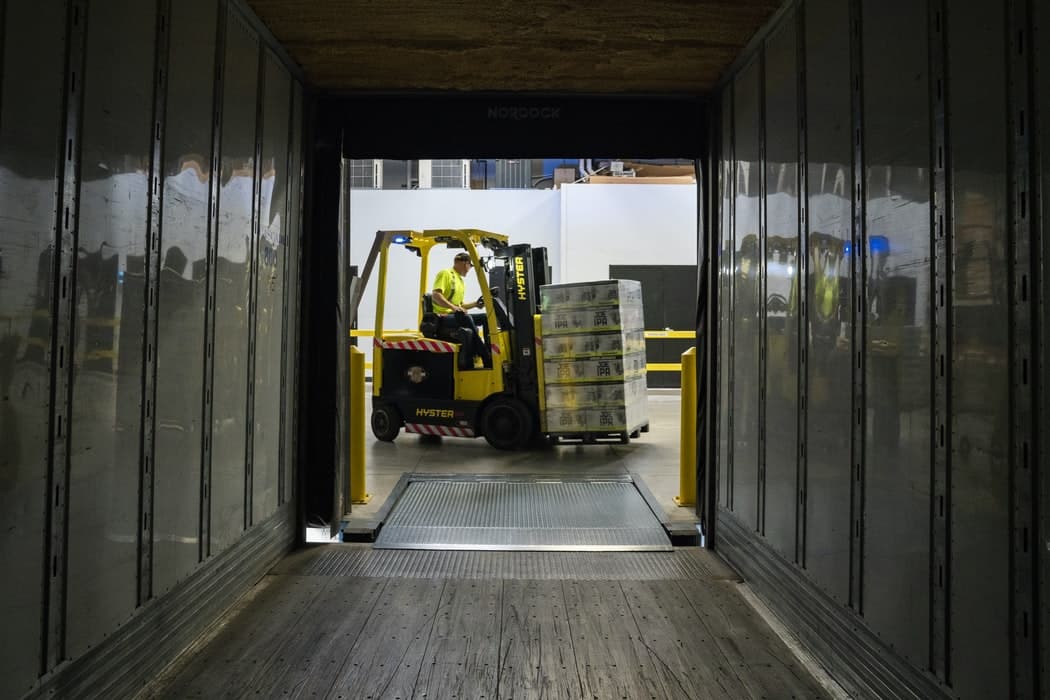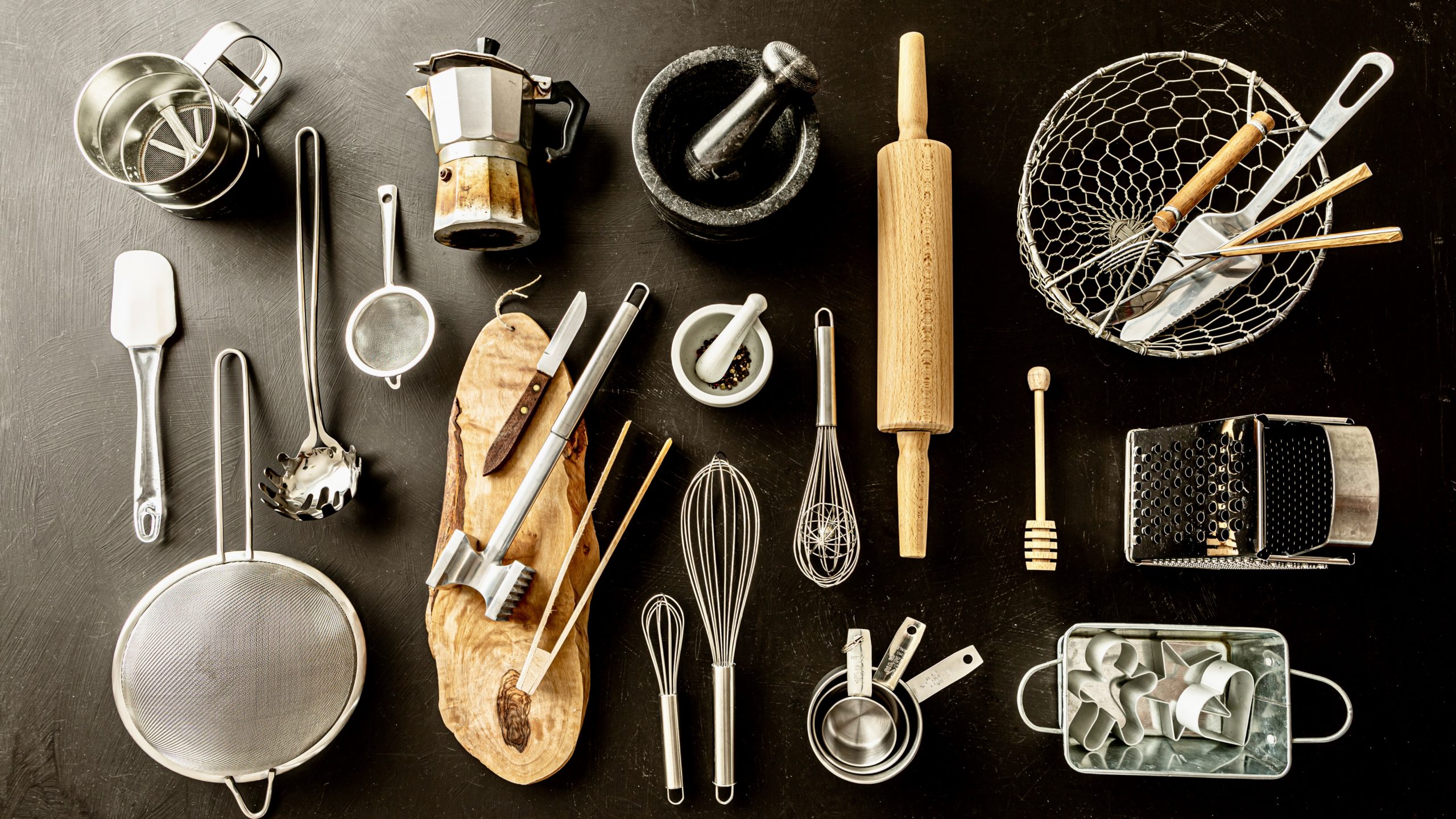We’ve put together a detailed step-by-step guide on how to manufacture kitchen accessories, from rubber spatulas to steel cutlery.
Working with a single company from the start can make the process much more straightforward. They will assist you throughout the project, supporting you in collaborating with experts and determining what is vital to your success at each point.
You must have a solid understanding of many technological processes to manufacture kitchen accessories, making it difficult to go it alone. But that doesn’t mean it’s impossible and we’re here to help.
Build A Solid Foundation
The development of a design is the foundation of manufacturing kitchen craft accessories. That can be the most challenging task of the process.
Here are some things to keep in mind when designing a practical and innovative product.
1. Scout Out The Competition
The industry will grow by 2.4 percent in 2021, with a market value of 15.8 billion dollars.
First, conduct research both formally and informally. Go through popular industry trade magazines like Kitchenware News, Kitchenware International, and Houseware Trade Publications.
Focus on market trends because it will help you evaluate the uniqueness of your product and whether it’ll be profitable.
Conduct preliminary research by going through online databases listing kitchenware businesses nearby. Narrow down your search and start visiting a range of shops, spanning from major retailers to small local shops. Plan your trips to correspond with the launch of new collections. Most retail stores launch new items in the fall to facilitate holiday shoppers.
Kitchenware is a vast category, including everything from aluminum utensils and kitchen craft accessories to steel utensils and ceramics. Pay attention to packaging, design variations in different price ranges, and advertisements for other products.
Every season, hundreds of people visit online retailers, confirming that they are rapidly gaining momentum. A thorough analysis of e-commerce is essential for your fieldwork. Browse through popular online stores, such as Crate and Barrel, Everything Kitchens, and The Cook’s Warehouse.
While scrolling, you’re looking for the variations in the following features that make these stores highly successful:
- Website design that is easy to navigate,
- Simple cart and checkout process,
- Mobile and tablet friendly interface,
- Digital and social media advertising campaign, and,
2. Make Sure Your Idea Is Profitable
A profitable idea must meet the following criteria.
The product must be safe, long-lasting, and satisfy unaddressed consumer needs.
Next, consider the market as a whole. Pricing, competition, and the ability to grow your business are significant aspects. You must consider specific industry requirements, such as the latest market trends, user-friendliness, and a sufficient profit margin.
A great idea fulfills a specific demand that a large consumer base has.
Durability and safety are vital features all consumers are looking for when purchasing kitchenware.
Expanding your idea gives you a long-term business plan, and significant profits in the upcoming years. Retailers show more interest in products that have growth potential. Keeping your idea’s solid foundation and tweaking a few features like style, color and theme are great ways to grow your business.
To learn more about coming up with a profitable idea, visit Use Your Market, a helpful resource developed by the US Small Business Administration.
3. Consider The Capital Investment
To determine cost-effectiveness, start by building a prototype.
Before going ahead with mass manufacturing, it’s critical to get a reliable estimate of cost and how you’ll distribute it. You can use several accounting techniques to do this, but we suggest contacting our network of professionals to calculate cost-effectiveness.
The production cost must be reasonable for marketing quality products at a competitive price and turning a profit. You can use different accounting techniques to compare the costs of building a prototype to get an estimate.
Capital investment will vary significantly on the size of your initial launch.

4. Create A Safe Product
For steel and aluminum utensils to qualify as safe for food use and prototypes, the Food and Drug Administration (FDA) outlines the following requirements:
- Non-absorbent and corrosion-resistant
- Cleanable and smooth surface
- Damage resistant surface
- Durable enough to survive repeated washing
The European Food Safety Authority (EFSA) emphasizes using inert materials to prevent food contamination and protect consumer health.
5. Seek Out Legal Advice
That includes acquiring a patent or trademark. The first step in obtaining a patent is conducting a patent check. Patent lawyers have sufficient training, and they search several repositories for existing patents on your product idea. Since retailers may have patented products that are still not commercially available, this step is critical to your product development.
Obtaining a patent on your own takes a long time, requiring you to take lessons, making this route unsuitable.

Narrow Down Your Consumer Base
Make a note of your target gender and age group, as well as other hobbies and interests that your target audience likes.
You can concentrate your promotional and branding strategies on a design that will connect to your target audience by knowing who they are.
It will also assist you in determining a reasonable manufacturing cost and sale value for your kitchen craft accessory.
Design Your Utensil
Start working on product designs once you have a fantastic concept and know your key demographic. The list of tips and tricks below will help you figure out how to manufacture kitchen accessories successfully.

1. Construct A Mind Map
A thorough brainstorming session will help you create a practical approach for the rest of the project. Consult the following checklist:
- Your core mission and branding convey your product’s intended goal and the essence you want to represent your brand.
- What is your unique selling point (USP), and how can you fulfill it?
- What do you think a fair price for your product is?
- The ad strategy as well as the key demographic.
- Where retail outlets (physical stores, online stores, malls) are located.
That’s where you’ll be able to combine your research, imagination, and competitive analysis to come up with a stunning concept.
2. Sketch Preliminary Designs
Preliminary sketches will give you a basic idea of your product design. You could do it yourself or hire a professional. Some things to keep in mind are the size range, the color palette, and potential tweaks that can be made to the design.
3. Generate a 3D Model
You can start creating a 3D model once you have a preliminary illustration. 3D artists use CAD (Computer-Aided Design) software to create a digital model of your design. This process takes a maximum of one week.
You could build a 3D model using software like Zbrush, but we suggest seeking expert help for this move.
Start Making Prototypes
Prototyping is a commitment-free way to perfect your product before mass manufacturing.
Following Safety Regulations For Food Prototyping
Since these products are so heavily regulated by authorities worldwide, it’s essential to note that prototypes have to follow the same standards are the actual product.

Prototyping With Different Raw Materials
- Aluminum utensils are perfect for baking accessories like trays, molds, and foils.
- Stainless steel utensils come in many different alloy ratios, and each is suitable for various equipment.
- Use cast iron and titanium for high-grade cooking utensils like skillets and machine parts.
High temperatures and molds are required for kitchenware prototypes, making a prototyping company your best bet. It is essential to understand the prototyping processes for different materials.
Prototyping Processes
- Professionals make silicone molds for casting metals. This technique can is great for all materials.
- CNC machinery is better for complex geometrical designs.
- Die-casting is best for aluminum and iron, using metals mold cavities and high-pressure environments to generate a prototype.
- Injection molding can create polished finished products of many materials but are costly for a small number of prototypes.
Select The Right Factory For You
You’ll need to work with a manufacturer for mass production.
Local Manufacturers Versus International Manufacturers
Going with a local retailer will help speed up the process while still allowing you to monitor the manufacturing process. They have long-term agreements with distributors and several facilities with a range of industrial machinery. However, this option will be more expensive.
Retailers and manufacturers are both excellent alternatives, depending on what you like. If you value creative control and monitoring the production line, go for hiring a manufacturer. Retailers are perfect if you don’t want to bother yourself with manufacturing details.
Retailers already have ties within the industry, and if they agree to work with you, they will take over the process. You will, however, have less creative control over the production line.
Local manufacturers are costly but allow you to have direct control over the entire manufacturing process. That means you can tweak the process if something isn’t working for you.
It’s much cheaper to outsource production to other countries, allowing you less control over the manufacturing process.
The following databases will help you narrow down an excellent factory for your needs:

Supply Chain
Keep the following steps in mind to fully understand the supply chain.
Planning Phase
This phase covers all you need to do before commercial manufacturing can start:
- Specifying the concept
- Creating a prototype
- Choosing the right factory for you
Acquisition of Resources
Consider the raw materials you’ll need and where you’ll obtain them now that you’ve devised a plan. Depending on the type of kitchen craft accessories you’ve designed, this step will vary. At this stage, developing relationships with suppliers is crucial.
Our team of experts in supply chain management can assist you in matching your needs to what’s available in markets.
The amount of money you spend on raw materials will decide both the quality and the amount of money you make.
The investment-to-profit ratio analysis in competitive bidding helps get the right equipment, raw materials, and professionals to kick-start the manufacturing process.
Understanding The Production Line
You’ll require materials, machinery, data analytics, and other technical expertise to manufacture a product. Our specialists in this area can make this process much more manageable.
The following are the most crucial elements:
- Forecast product consumption advance.
- Recognizing and reducing bottlenecks in the management process
- Deep analysis of throughput and overhead allocations
- Analyzing efficiency and reviewing progress
4. Delivery Processes
Several options are available depending on your preferences. Depending on the space available and the delivery system, different models, such as cross-docking, will optimize the operation.
Delivery is a two-tiered system; wholesalers and retailers.
Wholesalers are crucial because product outflow is dependent on them. Building solid long-term relationships and deciding delivery schedules and strategies can be tricky if you operate alone.
Retailers are vital as they have direct interaction with customers. Retailers need sizeable bonuses to boost our sales promotion in their outlets or malls.
Look into the rewards offered to retailers for higher margins and the best promotional shelves. These incentives motivate retailers to adopt better marketing strategies.
5. Customer Satisfaction
The customer is the last cog in the wheel. To determine the rate, promote revenue generated, product placement, and listen to consumer demands, conduct regular evaluations. A comprehensive understanding of customers, a detailed examination of CRM data, and other aspects must be the deciding factors in further processes.
You must have a procedure in place in case of defective products or consumer returns. That increases consumer confidence and gains customer loyalty.
It’s Time To Start
Manufacturing kitchen craft accessories is no easy feat. Hire services like ours to help you make the right decisions.
We at Gembah will help you:
- Streamline the complete experience by guiding you through each phase.
- Have a team of experienced designers on hand to assist you in creating a fantastic product.
- Determine a factory that is ideally suited to your requirements.
- Ensure that the production process is closely monitored to produce high-quality items and deliver them on time.
- Avoid common blunders, such as a lack of preparation.
- Find the right tools and raw materials.
- Create a product that can make you proud.
- Increase profitability by minimizing money waste.
- Investigate the industry landscape to make your product better than the rest.
- Maintain quality and customer service to increase customer loyalty.
If you have a unique kitchenware product in mind that you’re excited about, contact our experts today to kick-start your business.



